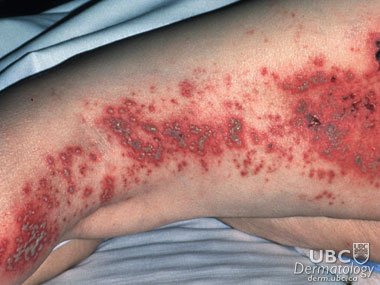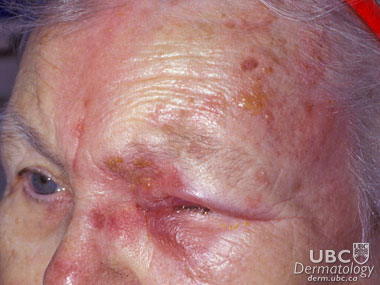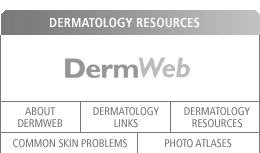Herpes Zoster – Shingles
The same virus responsible for chicken pox causes herpes zoster, commonly known as shingles. After the initial exposure, herpes zoster lies dormant in certain nerve fibers. It may become active as a result of many factors such as aging, stress, suppression of the immune system, and certain medications.
Herpes Zoster usually only affects one side of the body or face during an outbreak. It begins as a rash that lead to blisters and sores on the skin. The forehead, nose, and eyelids may be affected when the nerve branch that supplies the eye is involved. Sores on the nose are one of the main signals of possible eye involvement. There may be flu-like symptoms, red and rashy sensitive skin, blisters, pain, itching, and tingling.
Herpes zoster can cause several problems with the eye and surrounding skin that may have long term effects:
- inflammation and scarring of the cornea
- conjunctivitis - inflammation of the conjunctiva
- iritis - inflammation of the iris
- problems with the retina and optic nerve which may include glaucoma, cataracts, double vision, and scarring of the cornea and eyelids
Many who experience this infection find it extremely painful. Although the extremely painful phase usually lasts several weeks, some patients may continue to experience pain long after the outbreak has cleared, which is known as post-herpetic neuralgia.
Herpes zoster is treated with anti-viral medications, along with pain and anti-inflammatory medications. Eye drops and ointments may be prescribed to treat ocular problems.
Those who are infected should avoid contact with people who may be more susceptible to contracting the disease such as children, pregnant women, or the elderly.


« Back to Common Skin Disorders
modified 012508 |

